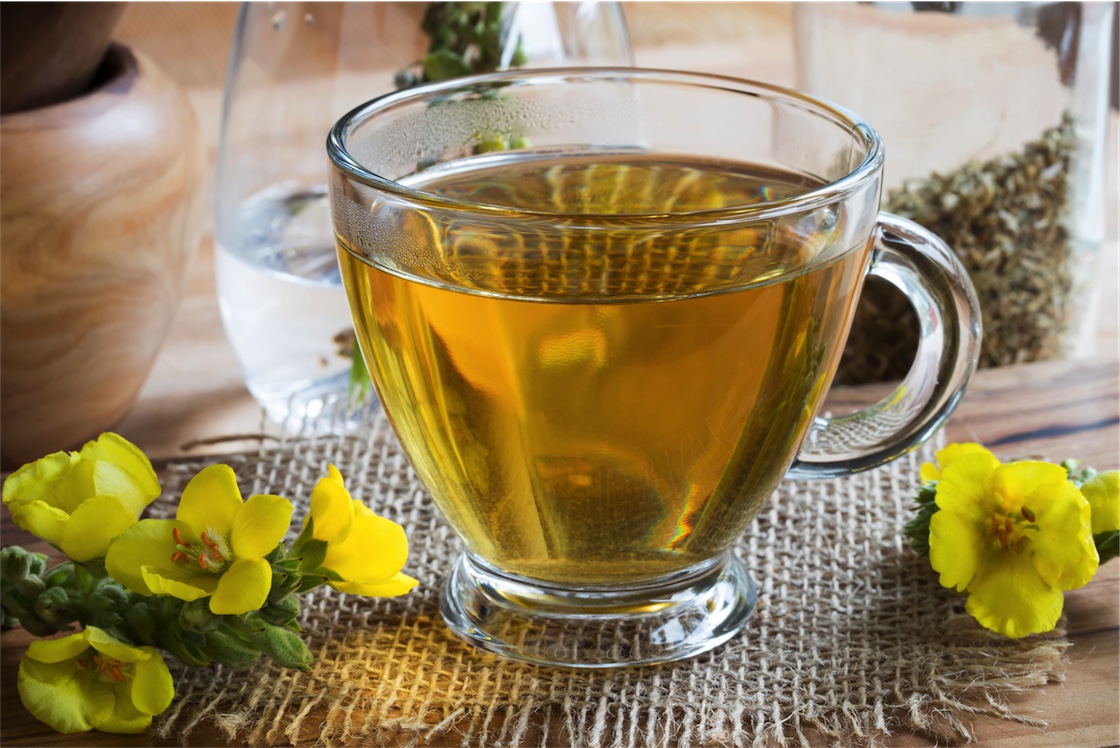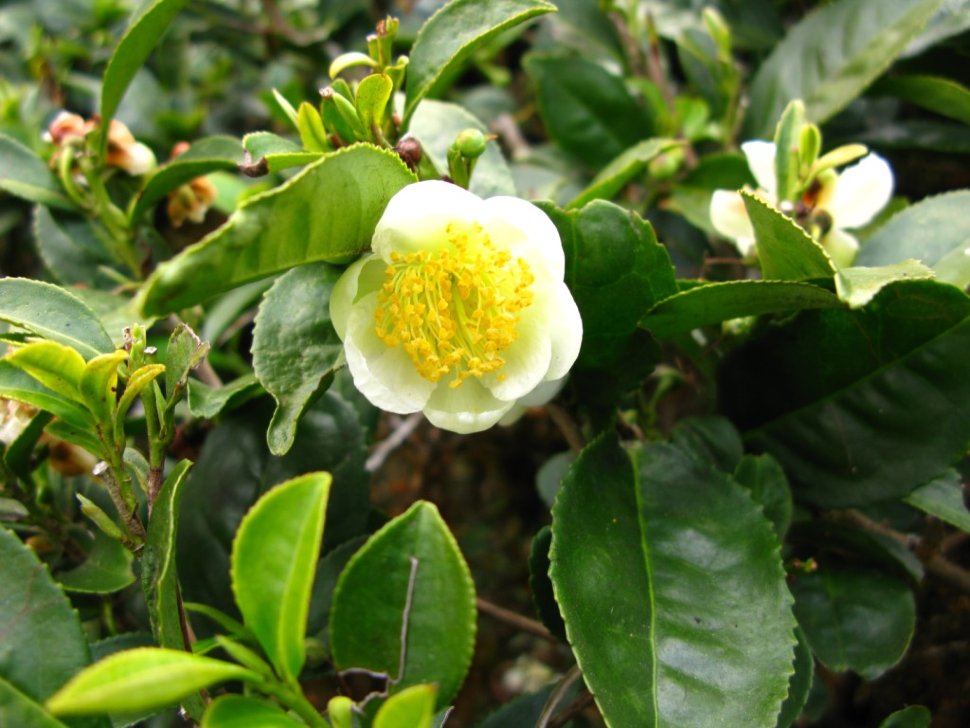What are the 6 Types of Tea ? Here are some helpful hints for selecting the most suitable type of tea for you.
Camellia Sinensis
This plant is used for caffeinated teas They are picked as the leaves emerge in early spring and processed in various ways to produce white, green, Oolong, and black teas. There are two main types. Camellia Sinensis var. Sinensis is a Chinese cultivar with tiny leaves that grows cold hardy to USDA Zone 6. C. Sinensis var. Assamica is native to northern India's Assam area and has bigger leaves that are hardy to zone 7 and south. The variations in flavor, colour, and the scent of these teas are accomplished by altering the variety, climate, harvest, oxidation, and processing.
1. GREEN TEA
Green tea is prepared by steaming and pan-frying these leaves and then drying them. It is not fermented and is produced by steaming fresh leaves at high temperatures. During the process, it can maintain important molecules called polyphenols. This seems to be responsible for many of the benefits of green tea. It contains 2% to 4% caffeine or 25 milligrams and is often sold as an herbal supplement.
The benefits of drinking this tea are weight loss, lowers blood pressure, prevents cancer, reducing inflammation in arthritis cases, boost our energy, increase fertility, and is good for oral hygiene. It also promotes cognitive function in the brain, especially working memory.
Drinking green tea in very high amounts can cause headaches, nervousness, sleeping problems, vomiting, diarrhea, irregular heartbeats, and convulsions and can be dangerous. It is also used as alternative medicine but it is not FDA approved!
2. BLACK TEA
Black tea is allowed to fully oxidize before being processed and dried, which makes the leaves dark brown and gives the tea its signature bold and brisk flavour, and they are often described as astringent. This type of tea can be drunk cold or hot, but in the United States, it is mostly consumed as a cold drink with sugar and milk, while others are self-drinkers. Ideally, teas can be drunk without adding anything. This tea is best to drink during breakfast and afternoon.
Black tea is also used to create blends that are flavoured with fruits, flowers, and spices, and display a wide range of flavour profiles according to their ingredients. Classic flavoured black tea mixes include Earl Grey, which is flavoured with bergamot essential oil or citrus flavours, and masala chai, which is mixed with various spices. Nowadays, many tea sellers have started to offer more unusual and non-traditional black tea blends, including flavours like chocolate or vanilla, wood or smoke, tropical fruits, warming spices, and dried herbs.
Some benefits of this tea are it may help regulate blood glucose level, diabetic or not. Black tea contains caffeine and contributes to improving strength and stamina during exercise. An average cup of coffee contains 95 mg, and a cup of black tea contains 47 mg of caffeine. It is also beneficial to mental alertness and cognitive processes.
3. OOLONG TEA
This traditional Chinese tea is a combination of dark and green tea. It is created when leaves wilt in the sun and are slightly bruised to create partial oxidation. Oolong represents a real artisanal mastery of the transformation of tea. The appearance, shape, and flavour of Oolong tea can vary enormously depending on the region in which it is grown and how it is treated. Oolong tea is used to improve mental alertness. It is also used for obesity and heart disease, to prevent weak and brittle bones, and for other conditions, but there is no good scientific evidence to support these other uses. One cup of infused Oolong tea contains small quantities of calcium, magnesium, and potassium. It also contains approximately 38 mg of caffeine. In contrast, one cup of green tea contains approximately 25g of caffeine.
4. WHITE TEA
It is collected at the beginning of the season and is made up of buds and new leaves. White tea is named after the white down on the young leaves that help protect the plant's new growth from insects. As it is hand-picked for a short time every year, white tea tends to be more expensive than other teas.
In contrast to other types of tea, there is no heating or oxidation involved in its preparation, so white tea is known as the least processed tea variety. it is generally light gold with a floral scent. Depending on the type of white tea, the taste can vary from oaky to sweet to floral with slightly fruity notes. When brewed properly, it is usually less bitter and assertive than black tea. This type of tea is typically served hot and freshly brewed. Sweeteners and milk are rarely used because of the delicate flavour, and it is frequently consumed on its own or with a small snack. A tea break in the morning or afternoon is the ideal way to completely experience this exquisite hot tea.
The caffeine content per cup is approximately 6 mg. White tea is an excellent anti-aging agent because it contains the same amount of antioxidants as ten glasses of apple juice. White tea assists our liver and kidneys in performing their functions efficiently by removing toxins from our bodies. When our liver is working hard to keep toxin compounds in our bodies, it appears as a black circle beneath our eyes and may also reveal a large form of eye bags. White tea will assist us in the detoxification process of our bodies. It will also assist us in relaxing by releasing theanine antioxidants, which work to calm the nerves and provide relaxation.
5.HERBAL TEA
Herbal tea is not technically a true tea, as it does not derive from the Camellia Sinensis plant. It is an infusion or mixture of bark, leaves, fruits, roots, or flowers belonging to almost any edible, non-tea plant. Herbal teas are widely known in Europe and around the world as tisanes. These are most often drink hot, but they can also be chilled and served over ice, according to your preferences. In a world that is increasingly stressful and chaotic, herbal teas offer the opportunity to return to basics and focus on wellness through a holistic approach. They can be created from almost any combination of natural ingredients, there are a large number of varieties of tisane each with its own flavour qualities and health benefits.
This tea may vary from Chamomile tea, Hibiscus tea, Peppermint tea, Red Rooibos tea, Turmeric Tea, Ginger tea, Eucalyptus Tea, Sage Tea, Lemon Balm tea, Fennel Tea, Uva Ursi (Bearberry) Herbal Tea and many more. Some benefits of different herbal teas like Chamomile helps calm the parasympathetic nervous system. When chamomile vapours move to the olfactory part of the brain, they reduce stress and tension in your body, which can also promote sleep. Fennel herbal tea helps reduce the effects of food poisoning, helps reduce acid reflux, helps increase menstrual flow, heartburn treatments. Uva Ursi (Bearberry) Herbal Tea can be used as an anti-bacterial treatment for bladder and renal problems and helps the body to get rid of bloating and water retention.
Peppermint tea cools the body in case of fever, is an excellent remedy for, gastrointestinal problems alleviate nausea, and can prevent vomiting, good for digestion. Eucalyptus is popular because it has numerous advantages. It is known for improving respiratory infections as it boosts the immune system and improves respiratory circulation. It can also combat respiratory infections with its strong antibacterial properties which help to reduce mucus and mucus and help combat common fungal infections such as candida.
6. Decaf Tea
Tea is made from tea leaves that have been processed to remove the majority of the caffeine. Tea labeled "decaffeinated" must contain less than 2.5 percent of its original caffeine content, according to law. Because of this law and process limitations, no decaf tea is caffeine-free.
In the modern world, there are four primary methods for decaffeinating tea. Methods known to use toxic chemicals have been prohibited, but that doesn't mean the four currently in use are safe.
First, Carbon Dioxide This method is thought to be the safest and most effective at preserving the tea's flavour. The small caffeine molecules are drawn out of the tea leaves by pressurized liquid carbon dioxide, leaving the larger molecules responsible for flavour behind.
Second, Methylene Chloride, Tea leaves are frequently soaked in methylene chloride, which forms bonds with caffeine molecules. The tea leaves may be strained out, leaving the majority of the caffeine behind. Methylene chloride is commonly regarded as toxic, although the procedure leaves residues of the chemical on the tea leaves. This technique and its safety are hotly debated, despite the fact that it is frequently utilized.
Third, By Water Processing - Caffeine, tastes, and virtually everything else is extracted using hot water. The water is passed through a carbon filter, which traps caffeine molecules. The water is reintroduced to the tea leaves, which absorb the extracted flavours once more. Though it is risk-free, it is mostly untapped in the tea world.
Fourth, Ethyl Acetate, Tea leaves are steeped in ethyl acetate, a naturally occurring solution in tea leaves and certain fruits. Though the procedure has no health concerns, the processing is generally recognized to degrade the flavour of the tea. Some tea consumers complain that this approach produces a chemical flavour.


/SPR_765281-how-much-caffeine-in-green-tea-5ac617a7ae9ab80037d57e38.png)
Can you post something about plant?
ReplyDelete